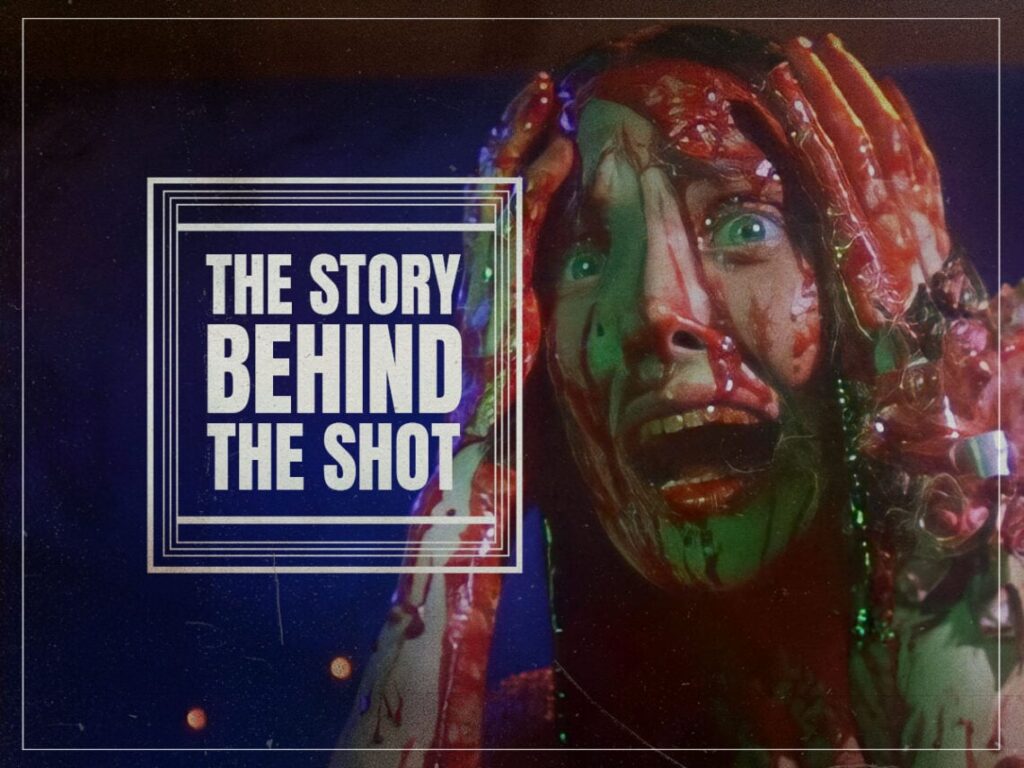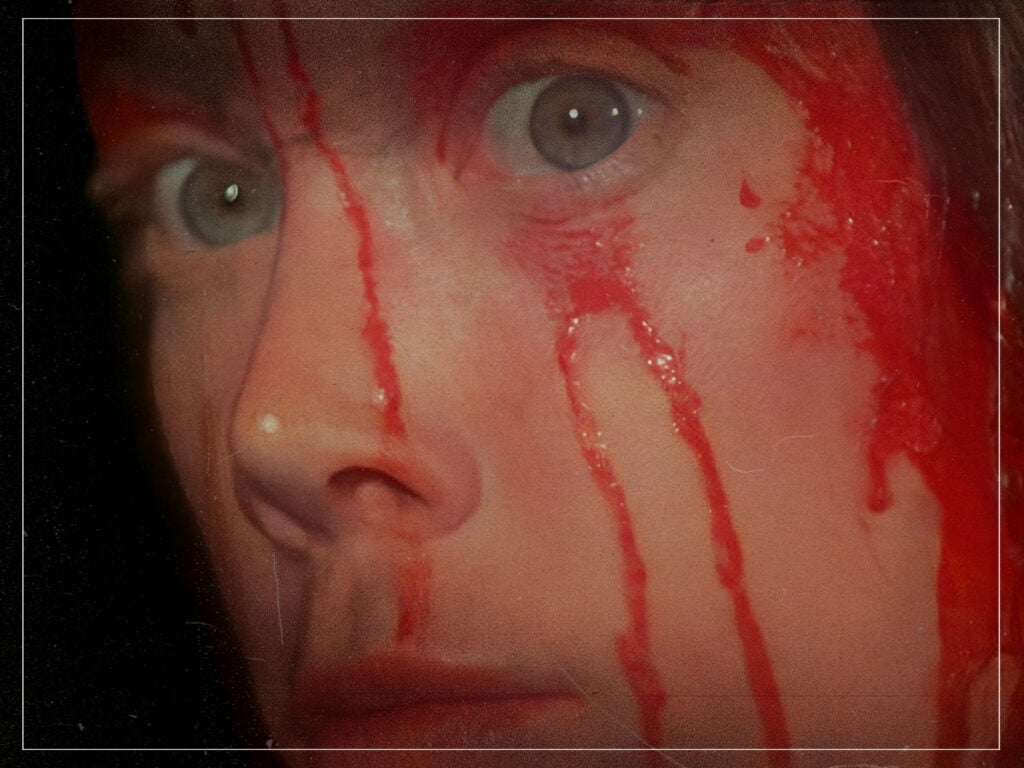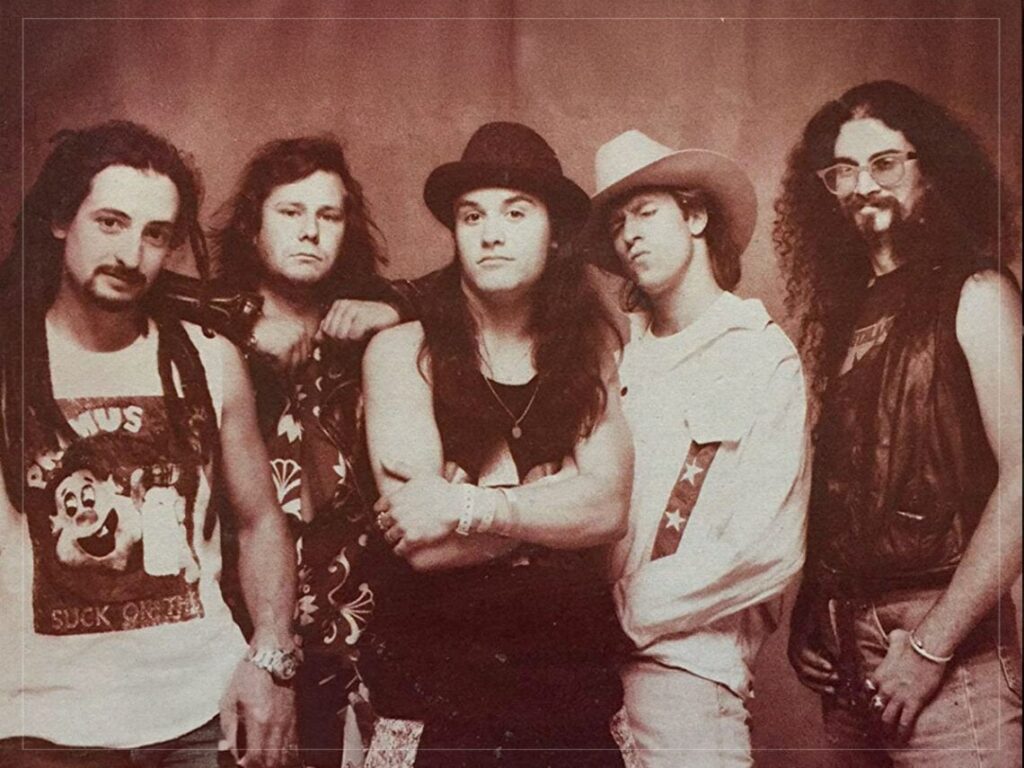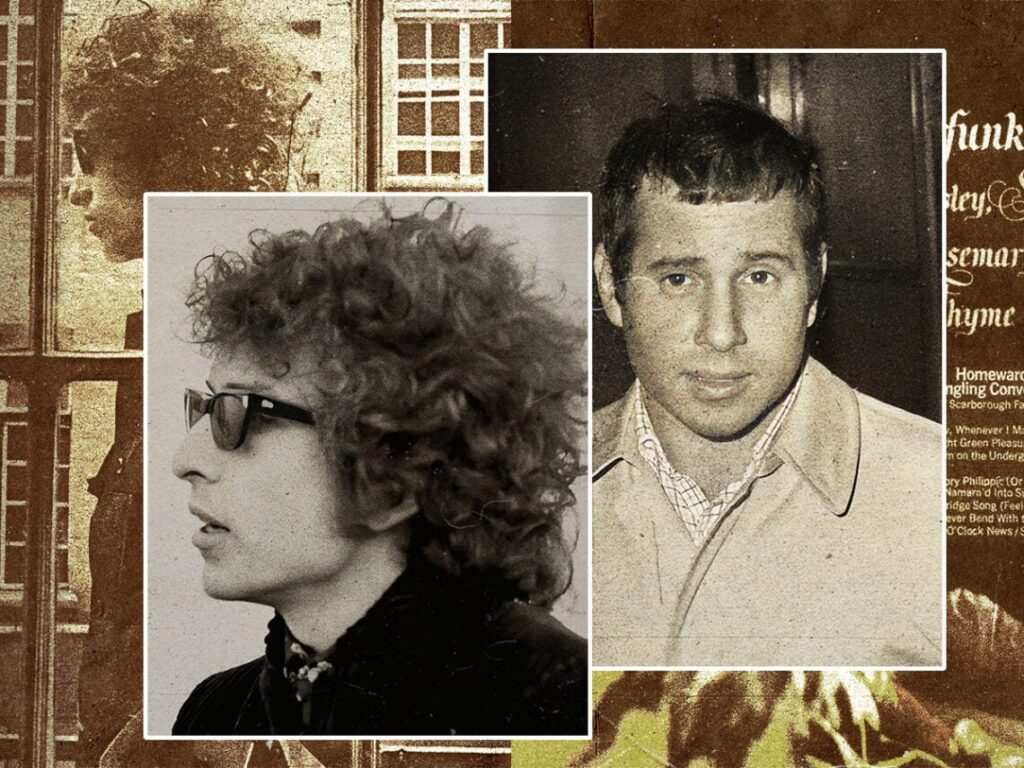The Story Behind The Shot: Delving into a coronation of blood in ‘Carrie’
 Posted On
Posted On
(Credits: Far Out / United Artists)
Few films are as fully levered on the fulcrum of one scene as Brian De Palma’s 1976 classic Carrie. Maybe the chest-burster scene from Alien, the shower scene from Psycho, or Major Kong’s final ride to earth on the back of an a-bomb in Dr Strangelove, but it’s hard to find a film that has such a specific point of tension release and unbridled catharsis as the moment when Sissy Spacek is crowned prom queen.
It was a coronation for more than just the bullied telekinetic – in a sense, it was a crowning of the king himself, Stephen King, as his first novel was adapted, and he was sucked into the maelstrom of mainstream success for the rest of his career.
Along with him was the director Brian De Palma, who cemented his place in the class of New Hollywood with a single scene, paving his way from low-budget Alfred Hitchcock homages like Sisters and Obsession to a 1980s full of canonised classics like Blow Out, Scarface and The Untouchables.
But what went into the making of the iconic prom scene in Carrie – that fateful and fatal moment where the oppressed girl turns around and becomes a monster herself? Shy teenager Carrie White has spent the film bullied by both her classmates and her religious extremist mother. She is socially isolated from her peers, emotionally isolated within her small family, and even kept in isolation from information about her own body, being taken fully by surprise by her first period.
But to Carrie’s eyes, things have taken a turn in her life – she stands on stage at the high school prom, having just been crowned queen alongside a popular boy who swears he’s not there on a dare. The audience knows sinister things are afoot, with Chekov’s bucket of pig’s blood swinging in the rafters, but for a brief moment, Sissy Spacek is allowed to play the character of Carrie with a smile on her face. It’s a calm before the storm.
De Palma masterfully concocted a scene that feels simultaneously hellish and bacchanal, with the interior of the high school gym clothed in darkness bar the multi-coloured stage lights, which light the crowd in garish and mystical hues of red and blue. The crowd applauds Carrie and her king, but as the sound of clapping begins to fade, we take the perspective of Sue Snell – Carrie’s most sympathetic once-tormentor. The audience takes her viewpoint as the shot follows a rope up into the rafters to the waiting bucket, and a bird’s eye view of the coronated couple shows them waiting unawares just beneath this particularly gross sword of Damocles. The dramatic tension is tightened by Pino Donaggio’s score, as trilling strings and a horn crescendo steadily turn the screws.

Corn syrup (as explained by Skeet Ulrich in Scream) and red food dye match the image of a soup of pig’s blood—a substance tied to ideas of uncleanliness and haram, and a callback by the bullies to Carrie’s previous menstrual panic.
And here, the pivotal segment of the film is when Carrie realises she was correct in thinking this was too good to be true. The music ceases, and the camera cuts between Spacek’s gobsmacked expression and an entire crowd of people near mirroring her. All sound is gone, but the creaking of the rope and the dripping of blood sound suspicious, as if the foley artist had put their microphone up to a bathroom sink with the faucets set to flow.
The interplay between red and blue takes up a lot of visual real estate here. With the lights coming on in the gym, we can see American flag decorations on the doors and walls. Meanwhile, the lights flicker between the two colours. Carrie herself is stained red, while the background of the stage is lit blue. And as she snaps and turns her telekinetic powers to murderous, we see her flick the blue lights red as if to match the blood and flames that are soon to come.
The lights give the scene a strong sense of duality. Maybe its the duality of Carrie herself, first and foremost – on one face, an innocent and a victim, but on the other a preternatural mass murderer and the eventual “horror” of this horror film. The dualities continue with her methods of attack. After slamming the doors closed with her mind, she assaults the crowd with fire hoses before setting the room on fire and descending the stage wreathed in flames. Red and yellow flames flicker beneath blue flashes of electricity as the wiring in the stage lights begins to fault, in a carnage shot in split screen.
In a sense, it’s a scene of a birth. Carrie wanders slowly from the room out into her small Maine town, covered in a quasi-placental mass. She’s been forcefully ejected from the social strata she spent her whole life trying to find a place in, and her next destination is to take revenge on her own mother. She stumbles out from the fire and blood of a new creature, saved from her victimhood by the wielding of a terrible power.
Spacek managed to convey those stark dualities between the monstrous and the innocent across a scene of more than seven minutes without a single line of dialogue. It’s not just a coronation for the characters, the writer and the director – it was this role that she would also be known for. And more specifically, this scene.
[embedded content]
Related Topics


